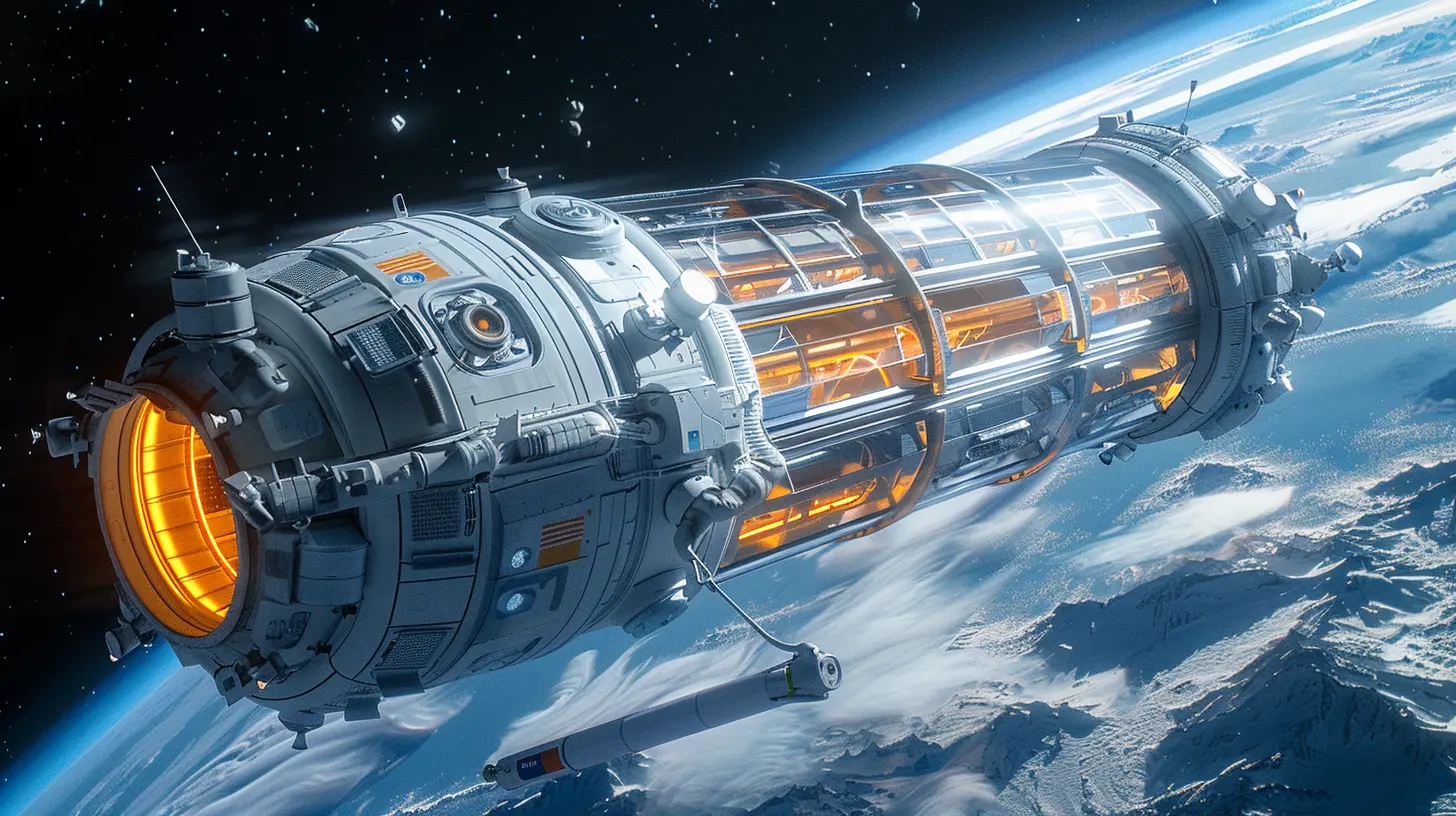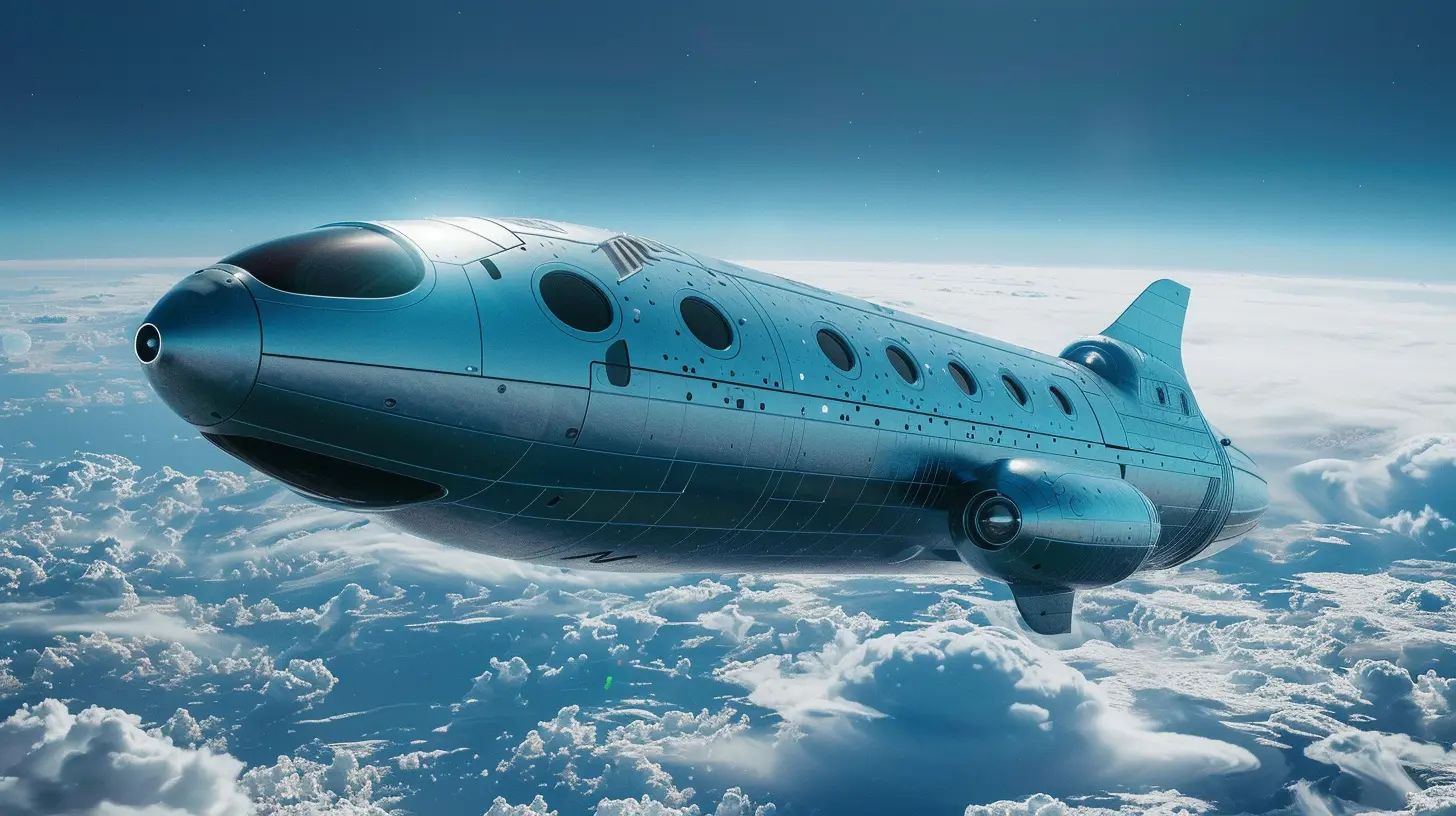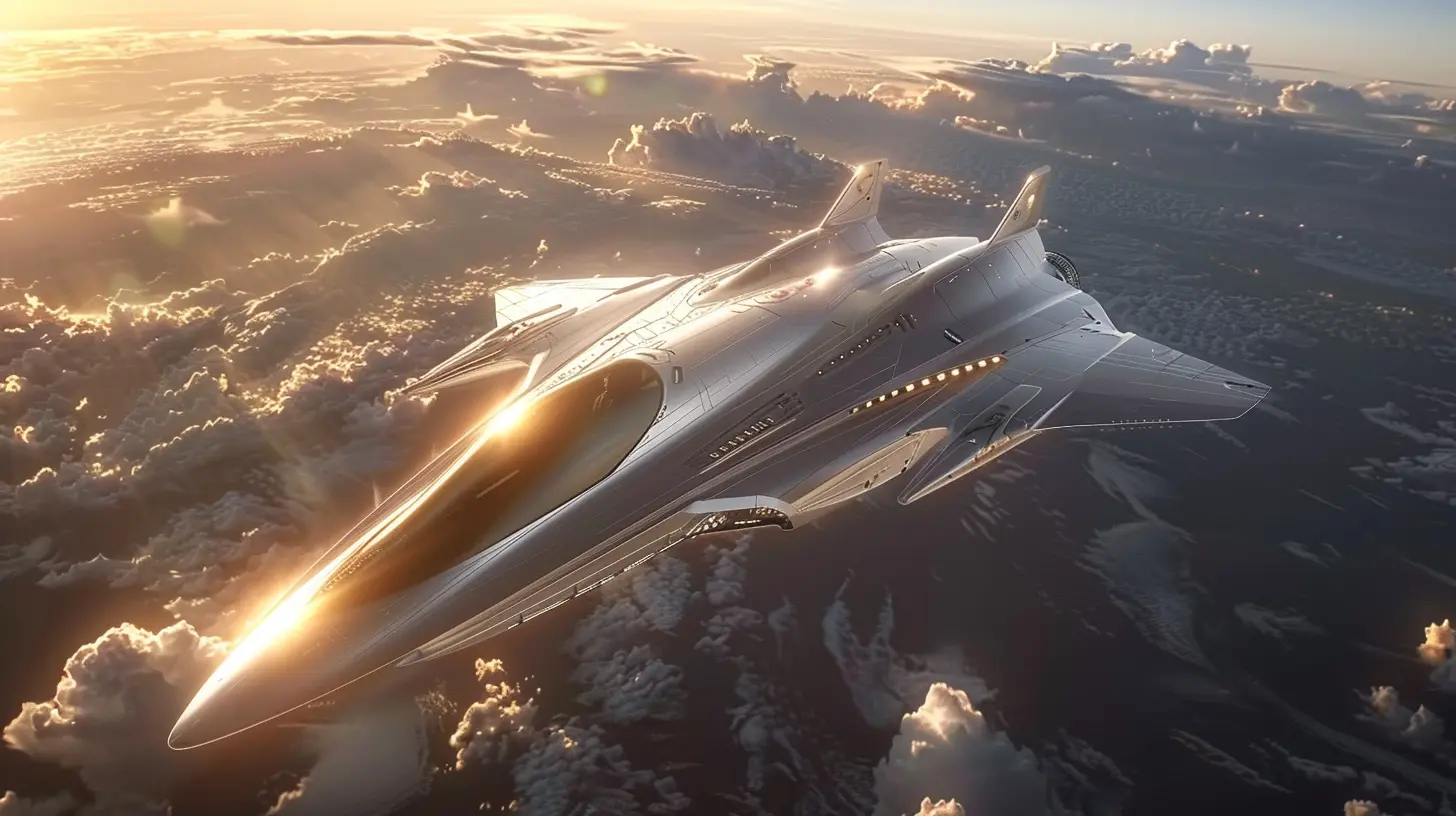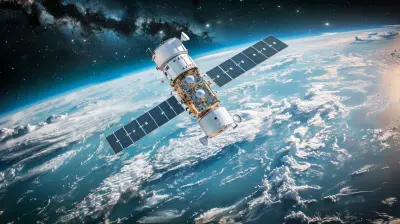How Space Tourism Will Be Powered by Cutting-Edge Tech
22 March 2025
Space tourism is no longer a distant dream; it's rapidly becoming a reality. In fact, we’re standing at the threshold of a revolutionary era where everyday people (or at least, those with deep pockets for now) will be able to hop on a rocket ship and blast off into space. But what’s making this possible? In a word: technology. From advanced rockets to spacecraft design, cutting-edge tech is the engine driving space tourism. It’s mind-boggling to think that what was once confined to sci-fi movies is now within our reach, thanks to breakthroughs in engineering, artificial intelligence, materials science, and more.
In this article, we’re going on a journey of our own—a deep dive into the technologies that are turning space tourism into a reality. Buckle up, because this ride is going to be out of this world!

1. The Role of Rockets: Modern Propulsion Systems
Let’s start with the most obvious technology—the rockets. Without them, there’s no getting off the ground, let alone into space. Space tourism companies like SpaceX, Blue Origin, and Virgin Galactic are pushing the boundaries of rocket propulsion systems to make space travel safer, cheaper, and more efficient.Reusable Rockets
One of the biggest game-changers in space tourism is the advent of reusable rockets. Companies like SpaceX have been pioneering this technology, allowing rockets to return to Earth, get refueled, and launch again. Think of it like flying an airplane. If you had to build a brand-new airplane for every flight, tickets would cost a fortune. The same goes for rockets. Reusability drastically cuts down costs. Instead of a one-and-done trip, these rockets can be used multiple times, making space travel more affordable and accessible.Advanced Propellants
Beyond reusability, advancements in rocket fuel are also playing a massive role. Traditional rockets have relied on chemical propellants, which are effective but not exactly efficient. Now, scientists are experimenting with alternative fuel sources, such as ion propulsion and nuclear thermal propulsion. These could potentially allow rockets to travel faster and more efficiently, reducing the time it takes to reach destinations like the Moon or even Mars. And let's be honest, no one wants to spend weeks floating around in space when you could get there in days, right?
2. Spacecraft Design: Comfortable and Safe
If you’re going to spend any amount of time in space, the spacecraft you’re in is pretty crucial. After all, it’s not just about getting there; it’s about the journey itself. Space tourism companies are working hard to make spacecraft not just functional, but also comfortable and safe for their passengers.Pressure Suits vs. Comfortable Cabins
Traditionally, astronauts wore bulky pressure suits that made moving around a challenge. But in the world of space tourism, comfort is key. Companies are designing cabins where passengers can experience microgravity—aka floating around—without being stuffed into an uncomfortable suit. Think of it more like being in a first-class airplane cabin but with zero gravity! These cabins are also equipped with large windows, so passengers can enjoy stunning views of Earth from space, something that will no doubt be the highlight of the trip.Advanced Safety Features
Safety, of course, is the top priority. Engineers are integrating cutting-edge technology into spacecraft design to ensure that passengers are as safe as possible. This includes autonomous flight systems that can take control in the event of an emergency, advanced heat shields to protect during reentry, and even artificial intelligence to assist with decision-making. Imagine having a smart co-pilot that can react faster than any human could in a crisis—pretty reassuring, right?
3. Artificial Intelligence and Robotics: The Silent Helpers
AI and robotics are becoming indispensable tools in the space tourism industry. Whether it's ensuring the spacecraft is running smoothly or helping out with tasks during the journey, AI is like the unsung hero of space travel.Autonomous Flight Systems
Spacecraft will be equipped with autonomous systems powered by artificial intelligence to help with navigation, control, and even emergencies. In the event that something goes wrong, the AI can take over and make split-second decisions that a human pilot might not be able to. That's not to say that human pilots won't be involved, but having AI as a backup adds an extra layer of safety.Robotic Assistants
Imagine having a robot butler in space. It might sound like something straight out of The Jetsons, but it’s not as far-fetched as you might think. Robots are being developed to assist space tourists during their journey. They could help with simple tasks like fetching items, or even more complex ones like conducting repairs on the spacecraft. Plus, in a zero-gravity environment, having a robot to help you float around could come in handy. Who wouldn’t want a floating helper?
4. Artificial Gravity: No More Floating Around?
One of the most talked-about aspects of space travel is floating in zero gravity. While it sounds fun (and it is!), prolonged exposure to zero gravity can have some adverse effects on the human body. Space tourists who are only going up for a short trip might not feel these effects, but what about those who want to stay longer? That’s where artificial gravity comes in.Rotational Systems
Scientists are working on creating artificial gravity using rotational systems. The idea is to spin parts of the spacecraft to create a centrifugal force that mimics the effects of gravity. This would allow passengers to walk around and avoid the negative health impacts of zero gravity, such as muscle atrophy and bone density loss. It’s like creating your own personal mini-Earth inside the spacecraft. Pretty cool, right?5. Spacesuits Reinvented: From Bulky to Sleek
Gone are the days of the clunky, oversized spacesuits that astronauts wore during the Apollo missions. In the age of space tourism, spacesuits are getting a modern makeover, blending functionality with fashion. These new suits are lightweight, comfortable, and packed with technology.Smart Spacesuits
These suits are designed with advanced materials that offer better mobility while still providing the necessary protection from the harsh environment of space. But that’s not all. They can even monitor your vital signs and adjust temperature and pressure automatically. It’s like having a personal health monitor built right into your outfit. Imagine a Fitbit on steroids, designed to keep you alive in space!Fashion Meets Functionality
Some companies are even partnering with designers to make the suits look sleek and stylish. After all, if you’re going to be posting your space selfies on Instagram, you better look good, right? These suits are designed to be both practical and aesthetically pleasing, ensuring that space tourists not only survive but thrive in style.
6. Communication and Connectivity: Staying in Touch from Space
Let’s face it, no matter how far you go, you’re going to want to stay connected. Whether it’s to share your experience on social media, call your loved ones, or send that crucial email, communication is crucial. Thankfully, advanced communications technology is making it possible to stay in touch, even from space.Satellite Internet
Thanks to developments in satellite technology, we’re on the brink of having high-speed internet even in space. Companies like SpaceX are working on satellite networks that provide global coverage, ensuring that space tourists can stay connected no matter where they are in orbit. Imagine live-streaming your space adventure to your friends back on Earth—talk about bragging rights!Real-Time Communication
Latency—how long it takes for data to travel between two points in space—used to be a huge problem. But now, with advancements in communications technology, real-time communication from space is becoming a reality. You’ll be able to make video calls, send messages, and even browse the web, all while floating hundreds of miles above Earth.7. The Future: What’s Next?
Space tourism is still in its infancy, but the future looks incredibly bright. As technology continues to advance, we can expect space tourism to become more accessible, more affordable, and even more thrilling. Here are a few technologies that could shape the next generation of space tourism:Hypersonic Travel
Hypersonic travel could revolutionize not just space tourism but global travel as well. Imagine being able to fly from New York to Tokyo in under an hour! Using advanced propulsion systems, hypersonic travel involves speeds greater than Mach 5 (five times the speed of sound). It’s not quite space travel, but it’s close—and it could make space tourism more affordable by lowering the cost of reaching orbit.Space Hotels
Yes, you read that right—space hotels! Companies are already working on the idea of orbiting hotels where tourists can stay for days or even weeks. These floating resorts would offer stunning views of Earth, luxurious accommodations, and plenty of activities to keep you entertained in zero gravity. It might sound like something out of a science fiction novel, but we’re not far off from making it a reality.
Conclusion: The Final Frontier is Closer Than You Think
With all these technological advancements, space tourism is no longer a far-fetched idea reserved for the super-wealthy or astronauts. From reusable rockets to AI-driven spacecraft, cutting-edge tech is making space travel more accessible, safer, and even comfortable. It’s an exciting time to be alive, and who knows? In the near future, you might be booking a space vacation the same way you book a beach getaway today.So, are you ready to take the ultimate trip? Thanks to cutting-edge tech, the stars are no longer out of reach.
all images in this post were generated using AI tools
Category:
Future TechAuthor:

Reese McQuillan
Discussion
rate this article
10 comments
Valeria Mathews
Fascinating insights on space tourism! I'm eager to see how emerging technologies will shape our journeys beyond Earth. The future looks exciting!
April 7, 2025 at 8:15 PM

Reese McQuillan
Thank you! I'm glad you found the insights intriguing. The future of space tourism is indeed promising, and technology will play a crucial role in making it a reality.
Eva Hines
It's exciting to see how technology is shaping space tourism! While we embrace these advancements, let's also consider their impact on our planet and future generations.
April 6, 2025 at 3:04 AM

Reese McQuillan
Thank you for your thoughtful comment! Balancing innovation in space tourism with environmental considerations is crucial for a sustainable future.
Zadie Gonzalez
This article beautifully captures the exciting intersection of technology and adventure. It’s inspiring to see how innovations in tech can make space tourism a reality for many. I can’t wait to see how this unfolds and the incredible experiences it will offer!
April 5, 2025 at 2:57 AM

Reese McQuillan
Thank you! I'm glad you found the article inspiring. It's truly an exciting time for space tourism, and I share your enthusiasm for what the future holds!
Abram Warren
Space tourism is set to revolutionize travel, leveraging AI, reusable rockets, and advanced materials for safety, efficiency, and unforgettable experiences.
April 3, 2025 at 11:16 AM

Reese McQuillan
Absolutely! The integration of AI, reusable rockets, and advanced materials will indeed transform space tourism, making it safer and more accessible while delivering truly unique experiences.
Zethryn Pope
Fascinating! What tech breakthroughs will revolutionize space travel next?
April 2, 2025 at 3:34 AM

Reese McQuillan
Next, advancements in reusable rocket technology, space habitat innovations, and breakthroughs in propulsion systems, like ion or nuclear thermal engines, will likely revolutionize space travel, making it more efficient and accessible.
Virginia Wyatt
In this realm where dreams take flight, Tech ignites the stars' delight. With each circuit and code entwined, Humanity’s reach is redefined. A cosmic dance, bold and bright, Space tourism beckons, a wondrous sight. The future awaits—let's ignite!
March 30, 2025 at 7:24 PM

Reese McQuillan
Thank you for your poetic insight! It's an exciting time as cutting-edge technology fuels the future of space tourism, making the cosmos more accessible than ever.
Charlie McAnally
Rocketing into vacation mode: less sunscreen, more circuitry!
March 30, 2025 at 4:37 AM

Reese McQuillan
Thanks for the comment! Exciting times ahead as technology transforms our travel experiences—both to the stars and beyond!
Bernadette McWilliams
Space tourism represents not just a new frontier for exploration, but also a testament to human innovation. Embracing cutting-edge technology will redefine our understanding of adventure and sustainability beyond Earth.
March 29, 2025 at 4:42 AM

Reese McQuillan
Absolutely! Space tourism is indeed a thrilling intersection of innovation and exploration, pushing us to rethink adventure and sustainability in ways we never imagined.
Remi Montgomery
Exciting insights! The future of space tourism looks incredible with innovative technology advancements!
March 26, 2025 at 8:53 PM

Reese McQuillan
Thank you! I’m glad you found the insights exciting—it's a thrilling time for space tourism indeed!
Stephanie Wright
This article ignites my curiosity about the future of space tourism! How will emerging technologies like AI and advanced propulsion systems transform the experience? I'm eager to learn more about the safety measures in place and whether these innovations will make space travel accessible for everyone. Exciting times ahead!
March 25, 2025 at 5:17 AM

Reese McQuillan
Thank you for your enthusiasm! Emerging technologies like AI and advanced propulsion are indeed set to revolutionize space tourism, enhancing safety and accessibility. Stay tuned for more insights on these exciting developments!
MORE POSTS

Data Center as a Service (DCaaS): The Future of IT Outsourcing

Digital Transformation and the Shift Towards Servitization

Emerging Trends in Smart Displays and Their Impact on Daily Life

Data Centers in Space: The Next Frontier for Cloud Computing

The Evolution of Gaming Monitors: From 60Hz to 240Hz and Beyond

Why Insider Threats Are the Biggest Challenge in Data Security

How Blockchain is Revolutionizing Gadget Supply Chains